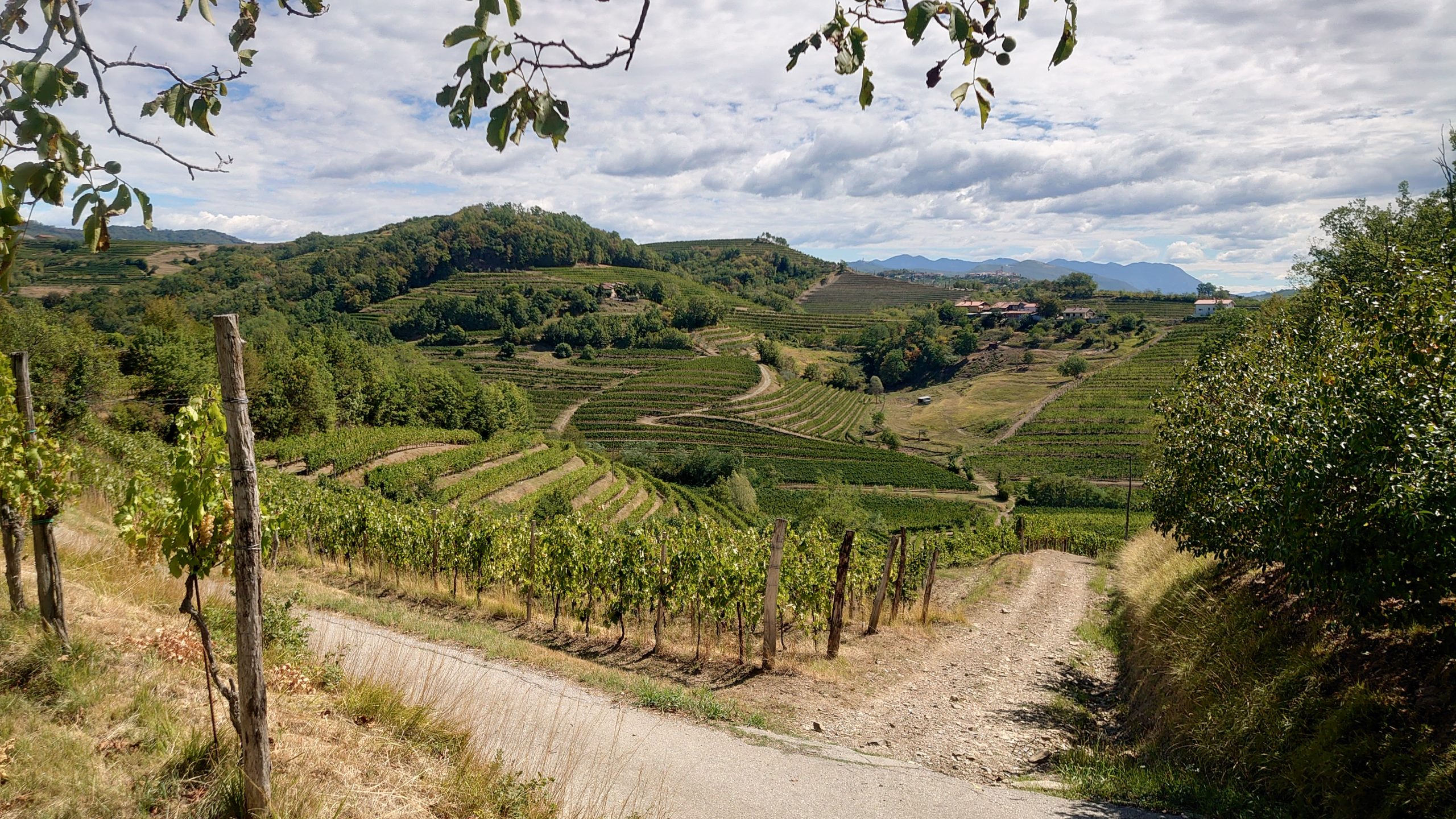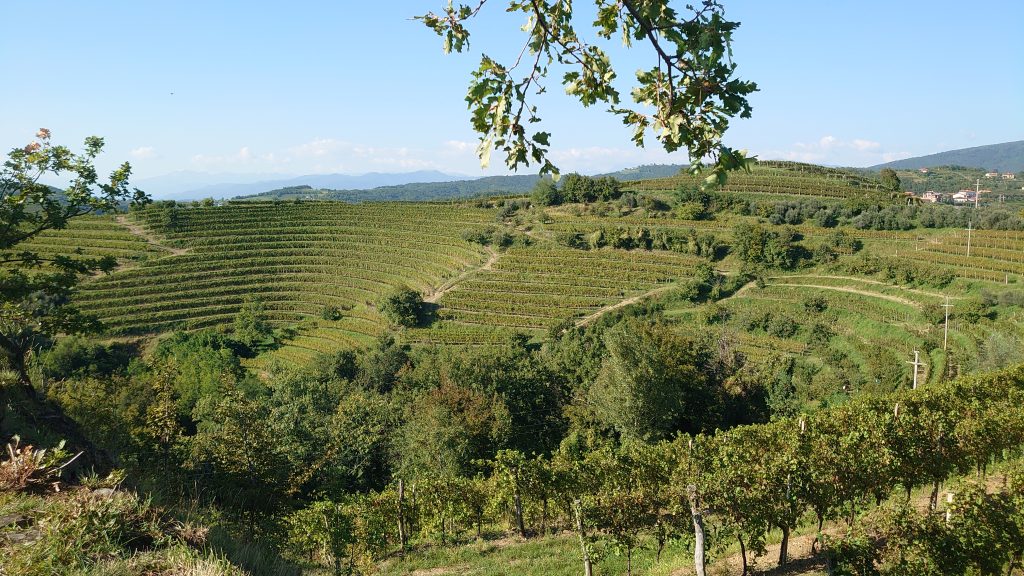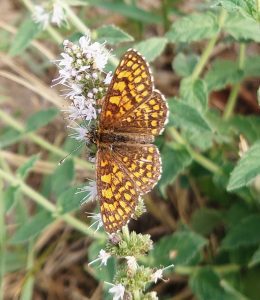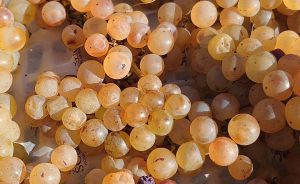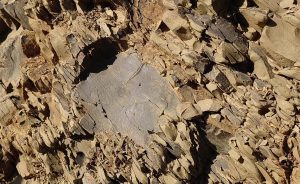Caroline Gilby MW revels in Rebula, the golden grape that encapsulates the terroir of Brda/Collio and appears to be coping well with challenges of climate change.
Somehow, I seem to have become a bit of an evangelist for obscure grapes from Central and Eastern Europe, and one of my favourites is the golden grape called Rebula in Slovenia and Ribolla Gialla in Italy. A recent trip to the Brda Home of Rebula conference in Slovenia took a deep dive into the science behind the terroir and highlighted to me once again that local grapes can really connect to a place and tell their story in a way that international incomers can’t.
Rebula is an old grape with a history dating back to the 14th century. It’s offspring of the prolific Heunisch Weiss (making it a half sibling of Chardonnay, Riesling, Furmint, Blaufränkisch, Dimiat and many more) and as such has an aromatic profile that is relatively neutral. At the same time, it has tremendous versatility and can produce fine sparkling wine; fresh mineral-driven young whites; layered, complex oaked versions and extended skin contact and orange styles, plus a few sweet passito wines. The best of these can be truly exciting in terms of quality and there’s real potential for longevity too – last year I was lucky enough to taste a wine from 1957 made by the state co-op that is now Klet Brda. This was a basic wine that was never meant for ageing but it was still amazingly vibrant and tasting of Rebula. However, if it’s not grown in the right place then the results can be thin, characterless and distinctly ordinary.
That right place is in the hills, and especially its heartland of Brda and Collio (I should also mention that it’s grown in Vipava Valley too), a hilly area that straddles the Slovenian-Italian border. Both names mean ‘hills’ and this was once a single region of ridges and valleys formed where a calcite sea met the base of the Julian Alps. It was divided up after World War II, with 70% of the area allocated to Yugoslavia. Remnants of border posts still stand sentry at the roadside, though today there’s little evidence of which country you’re in, apart from the language of road signs. In the early 2000s, foreigners had to drive 30 km to an official border crossing, even if you could accidentally wander over into Italy on a run through the vineyards. Today, it’s encouraging to see producers from both countries uniting to promote their flagship local grape at the annual Brda Home of Rebula conference.
So what makes Brda/Collio the right place? The region has 1,900 ha under vine and around 23% is Rebula, which is the leading grape, and wine is so important that 30% of the resident population is involved in it. Some 85% of Brda’s vineyards are on hills of at least 20% steepness and that means terraces that hug the hills. Terraces have defined agriculture here since Roman times, because it was the only way of farming in this poor region. But it turns out that terraces are great for retaining water, reducing erosion, and because they are short (around 80 m to 100 m), this helps manage floodwater when there is a downpour.
Brda is actually pretty wet compared to most quality wine regions, averaging around 1,300 mm a year, but this is where the local soils and bedrock play a heroic role. The Slovenian name for this soil is opoka (ponca in Italian). It’s an ancient formation of layers of marl, sandstone and calcite that fractures easily, allowing Rebula vines to root as deeply as 10-12 m. Cracks also allow surface nutrients to percolate down to the root zone. This bedrock is almost miraculous in the way it drains heavy downpours, but at the same time, because it forces vine roots deep, they can find water in drought years (irrigation is non-existent in the region so far). 2022 was the hottest and driest year on record and it was noticeable that vines stayed green while cherries, peaches and corn wilted in the fields. The other key feature of the climate here is the wind called Burja. It blows constantly between the Julian Alps and the Mediterranean, drying out canopies, cooling the air, and helping keep vines healthy.
Biodiversity is another feature of this stunning region – Prof. Denis Rusjan (Biotechnical Faculty, University of Ljubljana) has identified parameters of at least 20 species of wild plants and 25 bird nests per hectare as the target for measuring biodiversity, and to build healthy soil microbiomes. And inter-row swards are helpful in protecting soils from erosion and retaining moisture too. Ploughing between vines has long been abandoned, and the beautiful green vineyards support clouds of butterflies, bees and rare wildflowers. Most producers farm in a sustainable manner and many are certified under the Slovenian KOPOP programme.
Comfortably riding climate change
Dr Giovanni Bigot (agronomist and consultant, University of Udine) believes that Rebula gives its best quality when there’s a water deficit. This stimulates the vine’s secondary metabolism, so it produces protective compounds, in turn increasing aroma, colour and intensity in the grapes – Rebula is a deeply golden-coloured grape when ripe. It also ripens at moderate alcohol and keeps good acidity and low pH in this region. Bigot has analysed a range of parameters to compare Brda to other wine regions and has found that 1.5 m² of leaves per kilo of grapes is ideal to give concentration and persistence (this is typical for Brda and compares to 1.9 m² in Burgundy, 1.1 m² in Izonso on flat vineyards and 1.3 m² in Alto Adige).
He has also shown that diurnal temperature differences in Brda range from 9°C to 10.6°C and help to ensure freshness. Climate change is making an impact here, as in almost every wine region – 2022 was dry but 2023 was the wettest for 40 years, with record-breaking downpours and yet Rebula came through both extremes with grace. Bigot notes that 40 years ago there were just seven days a year when the temperature was over 30°C, whereas the last decade has on average seen 33 such days in a year, though fortunately only a handful of days when the temperature went over 35°C (the point at which grapevines shut down), so all-in-all he feels that Rebula is well set to cope with climate change and is arguably benefitting by producing higher quality, more concentrated fruit.
Wine can be a great lens to understand a terroir and that seems to be true of this region, especially through Rebula as its flagship grape. Bigot defines terroir as the interaction between soil, climate, tradition and people – clearly showcased in the wines of this region. Indeed, it could be argued that Brda is Rebula and Rebula is Brda – a heroic combination in the face of climate change.
